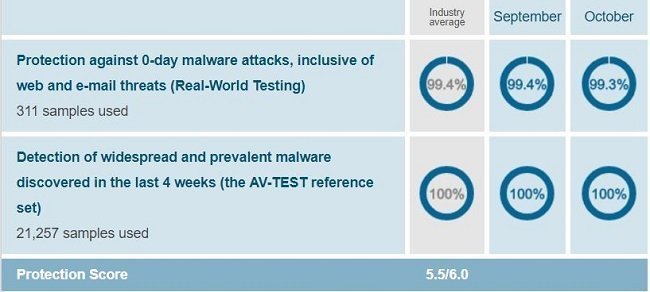
Four Bar Software Norton
Crank slider mechanisms with 0 and 1.25 eccentricity. A slider-crank linkage is a four-bar linkage with three revolute joints and one prismatic, or sliding, joint. The rotation of the drives the linear movement the slider, or the expansion of gases against a sliding in a cylinder can drive the rotation of the crank. There are two types of slider-cranks: in-line and offset. • In-line: An in-line slider-crank has its slider positioned so the line of travel of the hinged joint of the slider passes through the base joint of the crank.
A four-bar linkage, also called a four-bar, is the simplest movable closed chain linkage. It consists of four bodies, called bars or links, connected in a loop by four joints. It consists of four bodies, called bars or links, connected in a loop by four joints. Four-Bar Linkage Analysis Position Analysis Coupler Curve Plotting Animation; Transmission Angles Transmission Angle Plotting Velocity Analysis Acceleration Analysis Force Analysis Kinematic Analysis with Constant Angular Velocity for Link 2 Dynamic Analysis with Constant Angular Velocity for Link 2 Four-Bar Linkage Synthesis.
This creates a symmetric slider movement back and forth as the crank rotates. • Offset: If the line of travel of the hinged joint of the slider does not pass through the base pivot of the crank, the slider movement is not symmetric. It moves faster in one direction than the other. This is called a quick-return mechanism.
Spherical and spatial four-bar linkages [ ] If the linkage has four hinged joints with axes angled to intersect in a single point, then the links move on concentric spheres and the assembly is called a spherical four-bar linkage. The input-output equations of a spherical four-bar linkage can be applied to spatial four-bar linkages when the variables are replaced. Is a spatial four-bar linkage with hinged joints that have their axes angled in a particular way that makes the system movable. • Hartenberg, R.S.
Denavit (1964), New York: McGraw-Hill, online link from. • ^ • Design of Machinery 3/e, Robert L. Norton, 2 May 2003, McGraw Hill. • Toussaint, G. T., 'Simple proofs of a geometric property of four-bar linkages', American Mathematical Monthly, June–July 2003, pp. • ^ Myszka, David (2012). Machines and Mechanisms: Applied Kinematic Analysis.
New Jersey: Pearson Education. • Chakrabarti, Amaresh (2002). Engineering Design Synthesis: Understanding, Approaches and Tools. Great Britain: Springer-Verlag London Limited.
• Angeles, Jorge (2012), 'The Dual Generalized Inverses and Their Applications in Kinematic Synthesis', Latest Advances in Robot Kinematics, Springer Netherlands, pp. 1–10,:, • Hunt, K. H., Kinematic Geometry of Mechanisms, Oxford Engineering Science Series, 1979 External links [ ] Wikimedia Commons has media related to.
Interactive Four-Bar Linkage Dynamic Force Analysis Given position, velocity, acceleration, and inertia properties such as mass and mass moment of inertia for each moving link of a four-bar linkage, we are able to perform force analysis for the linkage. Three static equilibrium equations, in terms of forces in the X and Y directions and moment about the center of gravity of the link, can be written for each link. The is also available.
For link 2, we get F12x + F32x + Fg2x = 0 (1) -m2g + F12y + F32y + Fg2y = 0 (2) Ts + (-rg2) x F12 + (r2-rg2) x F32 + Tg2 = 0 (3) where rg2=rg2*exp(i(theta2+delta2)) is the position vector from joint Ao to the center of gravity of link 2. F12 and F32 are the joint forces acting on link 2. Fg2 and Tg2 are the inertia force and inertia moment of link 2. M2 is the mass of link 2 and Ts is the driving torque.
For link 3 we get F23x + F43x + Fg3x = 0 (4) -m3g + F23y + F43y + Fg3y = 0 (5) (-rg3) x F23 + (r3-rg3) x F43 + Tg3 = 0 (6) where rg3 = rg3*exp(i(theta3+delta3)) is the position vector from joint A to the center of gravity of link 3. F23 and F43 are the joint forces acting on link 3. Fg3 and Tg3 are the inertia force and inertia moment of link 3. M3 is the mass of link 3. Psd foni fotoshop. For link 4 we get F34x + F14x + Fg4x = 0 (7) -m4g + F34y + F14y + Fg4y = 0 (8) (-rg4) x F14 + (r4-rg4) x F34 + Tg4 + Tl = 0 (9) where rg4=rg4*exp(i(theta4+delta4)) is the position vector from joint Bo to the center of gravity of link 4. F14 and F34 are the joint forces acting on link 4.
Find great deals on eBay for hickok 6000a. Shop with confidence. Skip to main content. Hickok 6000 6000A 6005 Tube Tester Roll Chart (Original 1964) Pre-Owned. Or Best Offer +$14.46 shipping. Hickok 6000 6000A 6000B 6005 Tube Test Data Book. Find great deals on eBay for Hickok 6000A in Tube Testers. Shop with confidence. Find great deals on eBay for Hickok 6000A in Tube Testers. Hickok 6000 6000A 6005 Tube Tester Roll Chart (Original 1964) $94.91. Or Best Offer. Hickok 600 600A 6000 6000A 533 533A Tester Calibration Service. Fender tube chart. Original roll chart. Source: Came with 600A purchased from Chris Haedt. (O)bsolete – Hickok Obsolete Tube Types/Supplementary Test Data/for Models 533A, 600A, & 605A/Tube Testers/© The Hickok Instrument Co. - 1968/10514 DuPont Avenue Cleveland, Ohio. Consolidated Test Data for Hickok Model 533A-600A-605A Tube Testers. 81 rows Documentation, Manuals, and Schematics Free Hickok Downloads. Older Tube Test Data. A recommended list of Hickok tube testers. Models 6000 and 6000A. These were the successors to the 600 series. The 6000 has sockets up to 9-pin mini. The TV-7 is very similar to TV-10 but has flip-chart tube data in the upper lid of the unit. If you ever get to see inside of a TV-7, it is really built. All the switch decks and sockets.